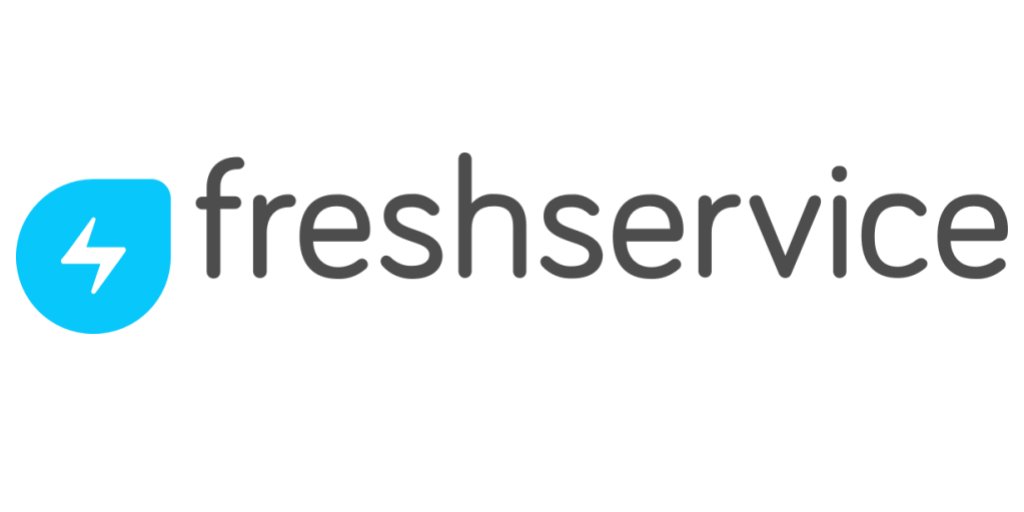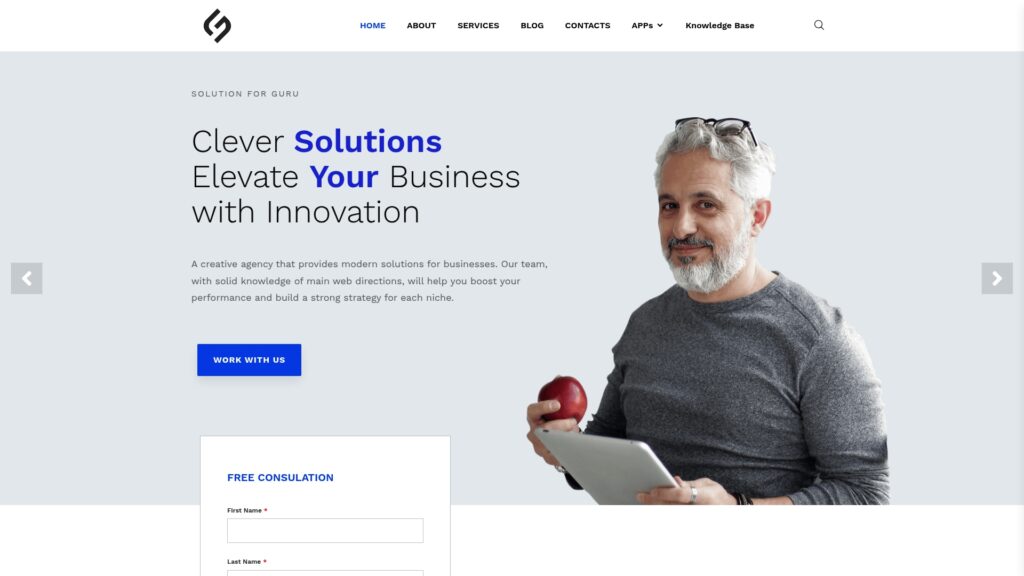How Can AI and Automation Transform ITSM from Reactive to Proactive?

The evolution from reactive to proactive IT Service Management represents one of the most significant transformations in modern IT operations. Traditional reactive approaches that simply respond to incidents as they occur are increasingly inadequate in today’s fast-paced business environment where downtime costs escalate rapidly and user expectations continue rising. Artificial intelligence and automation technologies now enable IT teams to predict problems before they impact users, prevent incidents through intelligent monitoring, and optimize service delivery continuously. This comprehensive guide explores how organizations can leverage AI and automation to transform their ITSM practices, examining the technologies, methodologies, and platforms that make proactive service management not just possible but practical and cost-effective.
Table of Contents
- Quick Summary
- What Defines Reactive Versus Proactive ITSM?
- Why Is the Shift to Proactive ITSM Critical Now?
- How Do Leading ITSM Platforms Enable Proactive Management?
- What AI Technologies Power Proactive ITSM?
- What Are the Key Components of Proactive ITSM?
- How Should Organizations Transition from Reactive to Proactive?
- Summing up
- Frequently Asked Questions
- Benefits of Cooperation with Solution for Guru Company
Quick Summary
The transformation from reactive to proactive IT Service Management leverages artificial intelligence and automation to predict, prevent, and preempt IT issues before they impact users. Reactive ITSM waits for incidents to occur and then responds, while proactive ITSM uses predictive analytics, intelligent monitoring, and automated remediation to prevent problems and optimize service delivery continuously. Leading platforms like Freshservice, ManageEngine, and Zendesk incorporate AI-powered capabilities including predictive analytics, intelligent automation, natural language processing, and machine learning that enable organizations to shift from firefighting to prevention. This transition delivers substantial benefits including reduced downtime, improved user satisfaction, enhanced IT team productivity, and lower operational costs. Successfully implementing proactive ITSM requires strategic planning, data infrastructure development, skills enhancement, and cultural evolution supported by expert guidance from partners like Solution for Guru who understand both the technology and organizational change dimensions of this critical transformation.
What Defines Reactive Versus Proactive ITSM?
Understanding the fundamental differences between reactive and proactive ITSM approaches provides essential context for organizations contemplating this transformation. These distinct philosophies shape how IT teams operate, allocate resources, and deliver value to organizations.
Reactive ITSM: The Traditional Firefighting Model
Reactive ITSM represents the traditional approach where IT teams primarily respond to problems after they occur and impact users. This model operates on a straightforward premise: users encounter issues, submit tickets or call help desks, and IT staff work to resolve problems as quickly as possible. While this approach addresses immediate needs, it creates several significant limitations.
In reactive environments, IT teams spend the majority of their time firefighting—rushing from one urgent issue to another without opportunity for systematic improvement. Each incident consumes resources for diagnosis, resolution, and communication, with efforts focused entirely on restoring service rather than understanding root causes or preventing recurrence. Consequently, the same problems often repeat cyclically, consuming resources repeatedly without permanent resolution.
Moreover, reactive approaches create unpredictable workloads that fluctuate dramatically based on incident occurrence. When multiple major issues strike simultaneously, IT teams become overwhelmed, leading to extended resolution times, stressed staff, and frustrated users. Conversely, during quiet periods, reactive teams may have capacity but lack visibility into proactive work that could prevent future incidents.
User experiences in reactive environments tend toward frustration. Employees encounter problems that disrupt their productivity, wait for IT response, experience downtime until resolution, and often face the same issues again in the future. This cycle creates perception that IT constantly struggles to keep systems running rather than delivering reliable, stable services.
From a business perspective, reactive ITSM creates substantial hidden costs. Downtime productivity losses accumulate across affected users. Repeated incidents consume disproportionate support resources. Emergency responses often require premium vendor support or overtime labor. Strategic initiatives get perpetually deferred as teams remain mired in operational firefighting.
Proactive ITSM: The Prevention and Optimization Model
Proactive ITSM fundamentally reimagines IT service delivery around prevention, prediction, and continuous optimization. Rather than waiting for problems to occur, proactive approaches leverage data, analytics, and automation to identify potential issues before they impact users and implement preventive measures that eliminate root causes.
In proactive environments, IT teams dedicate significant effort to monitoring, analysis, and improvement activities. They establish baselines for normal system behavior, continuously monitor for deviations, analyze patterns to identify emerging issues, and implement fixes before users notice problems. This approach shifts resources from repetitive firefighting to systematic improvement that compounds over time.
Proactive ITSM leverages several key capabilities. Predictive analytics examine historical data and current trends to forecast potential issues. Intelligent monitoring detects anomalies indicating developing problems before they cascade into incidents. Automated remediation resolves common issues automatically without human intervention. Root cause analysis identifies underlying factors causing incidents, enabling permanent fixes rather than temporary workarounds. Continuous optimization progressively improves service quality, reliability, and efficiency.
User experiences improve dramatically in proactive environments. Systems remain stable and available because problems get resolved before impact occurs. When issues do arise, users often experience transparent remediation without awareness that problems existed. Communication becomes proactive, with IT teams informing users about potential concerns before disruptions occur. Overall, technology becomes invisible infrastructure that simply works rather than constant source of frustration.
Business value from proactive ITSM substantially exceeds reactive approaches. Productivity losses from downtime decrease dramatically as incident frequency drops. IT resources shift from firefighting to innovation and strategic initiatives. User satisfaction improves, enhancing overall employee experience and retention. Competitive advantages emerge from superior technology reliability and agility.
The following table highlights key differences between these approaches:
| Dimension | Reactive ITSM | Proactive ITSM |
| Primary Focus | Incident response | Incident prevention |
| Resource Allocation | Firefighting activities | Monitoring and optimization |
| Workload Pattern | Unpredictable spikes | Steady, manageable flow |
| Problem Resolution | Temporary fixes | Root cause elimination |
| User Experience | Disruptive incidents | Transparent stability |
| IT Team State | Stressed, overwhelmed | Focused, strategic |
| Business Impact | Hidden downtime costs | Reduced costs, improved productivity |
| Technology Leverage | Minimal automation | Extensive AI and automation |
| Data Utilization | Limited historical analysis | Comprehensive predictive analytics |
| Strategic Capability | Constantly deferred | Regularly executed |
Importantly, the transition from reactive to proactive isn’t binary. Organizations typically exist on a continuum, with some services managed reactively while others benefit from proactive approaches. The journey involves progressively expanding proactive capabilities across more services and scenarios over time.
Why Is the Shift to Proactive ITSM Critical Now?
While proactive ITSM has always been theoretically superior to reactive approaches, several converging factors make this transformation not just beneficial but essential for organizations competing in today’s business environment.
Escalating Downtime Costs
The cost of IT downtime has increased dramatically as organizations become more digitally dependent. What once caused inconvenience now halts entire business operations. Studies consistently show that average downtime costs now exceed $5,000 per minute for mid-sized companies and reach hundreds of thousands per hour for large enterprises.
These escalating costs fundamentally change the economics of proactive investment. When downtime was merely annoying, organizations could justify reactive approaches as cost-effective. However, when single incidents cost hundreds of thousands in lost productivity and revenue, proactive measures that prevent these events deliver compelling returns even when requiring substantial investment.
Rising User Expectations
Employees increasingly expect consumer-grade technology experiences in workplace environments. Consumer services like Netflix, Amazon, and Google deliver near-perfect reliability with intuitive interfaces and instant gratification. Consequently, employees have less tolerance for workplace technology that frequently fails, requires complex workarounds, or disrupts productivity.
Meeting these elevated expectations requires proactive approaches that ensure stability, performance, and seamless experiences. Reactive firefighting cannot deliver the reliability users now expect and competitors increasingly provide.
Complexity Explosion
Modern IT environments have become exponentially more complex through cloud adoption, hybrid infrastructure, microservices architectures, API proliferation, and diverse endpoints. This complexity creates exponentially more potential failure points, dependencies, and interaction effects.
Human IT teams cannot manually monitor this complexity effectively through reactive approaches. The sheer volume of components, relationships, and data overwhelms traditional monitoring and response capabilities. Consequently, AI and automation become necessary rather than optional for maintaining visibility and control.
Platforms like ManageEngine address this complexity through comprehensive monitoring and analytics that make sense of vast data volumes, while Freshservice and Zendesk provide unified views that simplify complex environments for both IT teams and users.
Talent Shortages and Skills Gaps
Organizations face persistent shortages of skilled IT professionals, particularly in specialized areas like security, cloud architecture, and data analytics. These shortages make it impossible to scale IT teams proportionally with business growth and technology complexity.
Proactive ITSM powered by AI and automation multiplies existing team capabilities, enabling smaller teams to manage larger, more complex environments effectively. Automation handles routine tasks, AI assists with diagnosis and troubleshooting, and predictive capabilities prevent incidents that would otherwise consume scarce expert time.
Competitive Pressure and Digital Transformation
Digital transformation initiatives require reliable, agile IT infrastructure. Organizations cannot innovate and compete effectively while constantly firefighting operational issues. Leaders expect IT to enable business initiatives rather than merely keeping lights on.
This pressure demands transition from reactive operations that consume all available resources to proactive management that creates capacity for strategic work. Organizations stuck in reactive modes fall progressively behind competitors who’ve achieved proactive maturity.
Technology Maturity and Accessibility
AI and automation technologies that enable proactive ITSM have matured significantly while becoming more accessible and affordable. What once required massive investments in custom development and specialized expertise is now available through platforms like Freshservice, ManageEngine, and Zendesk at subscription prices accessible to organizations of all sizes.
This democratization means that proactive capabilities are no longer exclusive to technology giants with unlimited budgets. Small and mid-sized organizations can leverage the same AI and automation technologies as enterprises, creating level playing fields where operational excellence determines competitive success.
Regulatory and Compliance Pressures
Increasing regulatory requirements around data protection, system reliability, and operational transparency make proactive management essential. Demonstrating that organizations actively monitor, prevent, and continuously improve service delivery has become compliance necessity in many industries.
Reactive approaches that simply respond to incidents after they occur provide insufficient evidence of due diligence. Proactive monitoring, predictive capabilities, and documented continuous improvement demonstrate the operational maturity regulators increasingly expect.
These converging factors create situations where reactive ITSM no longer represents viable long-term strategies. Organizations must evolve toward proactive approaches or face escalating costs, declining competitiveness, and inability to meet stakeholder expectations.
How Do Leading ITSM Platforms Enable Proactive Management?
Modern ITSM platforms have evolved to incorporate AI and automation capabilities specifically designed to enable proactive service management. Understanding how leading solutions approach this challenge helps organizations select appropriate platforms and leverage their proactive capabilities effectively.
Freshservice: AI-Powered Proactive Service Delivery

Freshservice distinguishes itself through Freddy AI, an artificial intelligence framework that infuses proactive capabilities throughout the platform. This AI-powered approach makes proactive management accessible to organizations without requiring extensive data science expertise or custom development.
Freddy AI’s predictive analytics analyze historical incident patterns, system metrics, and usage data to forecast potential issues before they impact users. The system identifies correlations and trends that human analysts might miss, alerting IT teams to developing problems while there’s still time for preventive action. For instance, if disk space consumption trends suggest imminent capacity issues, Freddy alerts teams days or weeks in advance rather than waiting for systems to fail.
The platform’s intelligent ticket routing ensures that incidents reaching the service desk get directed immediately to appropriate specialists, reducing resolution times and preventing escalations. More importantly, Freddy learns from resolution patterns, progressively improving routing accuracy and suggesting knowledge articles that accelerate resolution.
Automated remediation capabilities enable Freshservice to resolve common issues without human intervention. When monitoring detects predefined conditions—like service failures or threshold breaches—automated workflows can restart services, clear caches, reallocate resources, or execute other remediation scripts. Users often remain unaware that problems occurred and were resolved automatically.
Freshservice’s chatbot capabilities provide intelligent self-service that handles routine requests conversationally, deflecting tickets before they reach human agents. The chatbot learns from interactions, progressively improving its ability to understand user intent and provide relevant solutions. This proactive deflection prevents incident escalation while delivering instant gratification for users.
The platform’s service catalog enables proactive service request management where users submit requests through standardized workflows that guide them through requirements, obtain necessary approvals, and trigger automated fulfillment. This structure prevents incomplete requests, reduces back-and-forth communication, and accelerates delivery.
Asset management integration provides visibility into hardware and software estates, enabling proactive lifecycle management. The platform identifies aging equipment requiring replacement, software nearing end-of-life, and license compliance issues before they create operational or compliance problems.
ManageEngine: Comprehensive Proactive Infrastructure Management

ManageEngine takes comprehensive approach to proactive ITSM through deep integration between service desk, monitoring, and management capabilities. This integration enables proactive management across entire IT infrastructure rather than just service desk operations.
ManageEngine’s OpManager network monitoring solution continuously tracks infrastructure health, performance, and availability. Advanced analytics detect anomalies indicating developing issues, while threshold-based alerting ensures IT teams know about problems before users report them. Integration with ServiceDesk Plus automatically creates incidents when monitoring detects issues, initiating response before business impact occurs.
The platform’s Applications Manager extends proactive monitoring to applications and middleware, tracking performance metrics, transaction times, error rates, and resource utilization. This visibility enables IT teams to identify performance degradation, capacity constraints, and potential failures before they disrupt users.
Desktop Central provides endpoint management that enables proactive patch management, software deployment, and configuration standardization. Rather than waiting for vulnerabilities to be exploited or users to report missing software, IT teams can proactively maintain endpoints in secure, optimized states.
ManageEngine’s Analytics Plus transforms operational data into actionable insights through advanced reporting and visualization. The platform identifies trends, patterns, and anomalies that inform proactive decisions about capacity planning, service optimization, and preventive maintenance. Predictive analytics forecast future trends, enabling teams to address capacity, performance, and availability concerns before they manifest as incidents.
The ServiceDesk Plus problem management module facilitates systematic root cause analysis that eliminates underlying issues causing recurring incidents. Rather than repeatedly fixing symptoms, teams identify and address root causes, permanently preventing entire categories of incidents.
Automation capabilities throughout the platform enable proactive workflows. Automated patch deployment, configuration management, service health checks, and capacity adjustments occur on schedules or triggered by conditions, maintaining optimal states without requiring manual intervention.
Zendesk: Intelligent Support and Proactive Communication

Zendesk approaches proactive ITSM through superior support experiences and intelligent communication that prevents escalations and improves outcomes. While less infrastructure-focused than ManageEngine, Zendesk excels in proactive user engagement and self-service enablement.
The platform’s Answer Bot leverages machine learning to provide intelligent self-service. When users submit requests, Answer Bot immediately suggests relevant knowledge articles that might resolve their issues. This proactive assistance often enables users to solve problems instantly rather than waiting for agent response, preventing ticket escalation while delivering better user experiences.
Zendesk Guide creates comprehensive knowledge management that enables proactive self-service. The platform’s intelligent search understands user intent, returning relevant articles even when search terms don’t match exactly. Community forums enable peer-to-peer support where users help each other, deflecting tickets from IT teams while building collaborative cultures.
The platform’s triggers and automations enable sophisticated proactive workflows. For example, when systems detect that multiple users are experiencing similar issues, triggers can proactively notify all potentially affected users about known problems and estimated resolution times before they submit tickets. This proactive communication reduces duplicate tickets, manages expectations, and demonstrates IT attentiveness.
Satisfaction prediction uses machine learning to identify support interactions at risk of poor satisfaction scores. This early warning enables agents to take proactive remediation actions—escalating to supervisors, offering additional assistance, or following up more thoroughly—that turn potentially negative experiences into positive ones.
SLA management features provide proactive alerting when tickets risk missing service level commitments. Rather than discovering SLA breaches after they occur, teams receive advance warning that enables prioritization adjustments and resource reallocation to meet commitments.
Zendesk’s Explore analytics provide comprehensive reporting that identifies trends, patterns, and opportunities for proactive improvement. Analysis reveals common issue types that could benefit from better documentation, self-service workflows, or permanent fixes. It identifies capacity constraints before they create service degradation and highlights process bottlenecks that could be optimized.
The following table compares proactive capabilities across these platforms:
Organizations should select platforms based on which proactive capabilities matter most for their specific environments and maturity levels. Freshservice offers balanced, accessible proactive features suitable for many organizations. ManageEngine provides the most comprehensive proactive infrastructure management for complex environments. Zendesk excels in proactive user engagement and support experience optimization.
What AI Technologies Power Proactive ITSM?

Understanding the specific AI technologies enabling proactive ITSM helps organizations leverage these capabilities effectively and set realistic expectations about what AI can and cannot accomplish.
Machine Learning for Pattern Recognition
Machine learning algorithms analyze historical data to identify patterns, correlations, and anomalies that inform proactive decision-making. Unlike traditional rule-based systems that only detect explicitly programmed conditions, machine learning discovers subtle patterns through statistical analysis.
In ITSM contexts, machine learning examines incident histories, system metrics, user behaviors, and environmental factors to identify leading indicators of problems. For example, ML algorithms might discover that specific combinations of system metrics consistently precede failures, enabling prediction hours or days in advance.
Supervised learning trains on labeled historical data where outcomes are known. IT teams provide examples of normal operations versus problem scenarios, and algorithms learn to distinguish between them. Once trained, these models classify new situations and predict likely outcomes.
Unsupervised learning identifies patterns without predefined labels, useful for discovering unknown relationships or anomalies. These algorithms might cluster incidents into categories, revealing that seemingly unrelated issues actually share common root causes.
Freshservice’s Freddy AI leverages machine learning extensively for ticket categorization, routing optimization, and predictive analytics. Similarly, ManageEngine uses ML in Analytics Plus to forecast trends and identify anomalies across infrastructure metrics.
Natural Language Processing for Understanding
Natural Language Processing (NLP) enables systems to understand human language in tickets, emails, chats, and documentation. This understanding powers several proactive capabilities.
Intent recognition determines what users are trying to accomplish from their natural language descriptions. Rather than requiring users to navigate complex category structures, NLP-powered systems understand requests stated conversationally and route them appropriately.
Sentiment analysis detects emotional tone in user communications, identifying frustrated or angry users who require extra attention. This proactive detection prevents escalations and enables superior service recovery.
Automated categorization analyzes ticket descriptions to assign appropriate categories, priorities, and routing without manual classification. This automation ensures consistent categorization while freeing agents from tedious classification work.
Knowledge article recommendation uses NLP to match user requests with relevant knowledge base content, enabling proactive self-service deflection. Both Zendesk and Freshservice leverage NLP extensively for this purpose.
Predictive Analytics for Forecasting
Predictive analytics combine historical data, current observations, and statistical models to forecast future events, trends, and outcomes. These forecasts enable proactive planning and prevention.
Incident prediction forecasts when and where incidents are likely to occur based on leading indicators. For example, predicting that a server will fail within 48 hours based on performance degradation patterns enables preventive maintenance before failure impacts users.
Capacity forecasting predicts when resources will become constrained, enabling proactive expansion before performance degrades. Storage capacity, network bandwidth, and computing resources can all be forecast to enable timely provisioning.
Trend analysis identifies directional changes in incident volumes, resolution times, or user satisfaction that indicate developing issues requiring intervention. Early detection enables course correction before situations deteriorate significantly.
ManageEngine’s Analytics Plus provides sophisticated predictive analytics across infrastructure and service desk operations, while Freshservice incorporates prediction into Freddy AI’s proactive alerting.
Intelligent Automation for Remediation
AI-powered automation goes beyond simple rule-based workflows to make intelligent decisions about when and how to execute remediation actions.
Contextual automation considers situation-specific factors when determining whether to execute automated responses. Rather than blindly executing scripts when conditions trigger, intelligent automation evaluates context, assesses risks, and makes nuanced decisions.
Adaptive workflows learn from outcomes to improve future decisions. If certain remediation approaches prove more successful than others, automation progressively favors more effective approaches.
Orchestration coordinates complex sequences involving multiple systems, applications, and dependencies. AI-powered orchestration adapts execution based on intermediate results and changing conditions rather than following rigid scripts.
Anomaly Detection for Early Warning
Anomaly detection algorithms identify deviations from normal patterns that might indicate developing problems. This capability is essential for proactive management because many issues manifest initially through subtle anomalies before cascading into obvious failures.
Statistical anomaly detection compares current observations against historical baselines, identifying values or patterns statistically unlikely to occur naturally. These anomalies warrant investigation even when they don’t breach explicit thresholds.
Behavioral analysis examines user or system behaviors to detect unusual activities that might indicate security breaches, misconfigurations, or emerging problems. For example, sudden changes in resource consumption patterns often precede failures.
Multi-dimensional analysis evaluates combinations of metrics rather than individual values, identifying complex anomalies that single-metric monitoring would miss.
These AI technologies work synergistically to enable comprehensive proactive ITSM. Organizations don’t need to implement all capabilities simultaneously; rather, they can progressively adopt AI features as they mature their proactive practices.
What Are the Key Components of Proactive ITSM?
Successful proactive ITSM requires several integrated components working together to predict, prevent, and preempt IT issues. Understanding these components helps organizations build comprehensive proactive capabilities rather than implementing isolated features.
Comprehensive Monitoring and Observability
Proactive management begins with deep visibility into infrastructure, applications, services, and user experiences. Organizations cannot predict or prevent problems they cannot observe.
Infrastructure monitoring tracks servers, networks, storage, and other hardware components, collecting metrics on availability, performance, capacity, and health. This monitoring detects developing issues like degrading performance, approaching capacity limits, or failing components.
Application performance monitoring extends visibility into applications, tracking response times, error rates, transaction throughput, and user experience metrics. This observability enables detection of application-specific issues that infrastructure monitoring might miss.
User experience monitoring measures actual end-user experiences rather than just technical metrics. Synthetic transactions simulate user activities to verify that services work from user perspectives.
Log aggregation and analysis collects logs from across IT environments, analyzing them for errors, warnings, and patterns indicating problems. Centralized log analysis reveals issues that individual log files might obscure.
ManageEngine provides particularly comprehensive monitoring through its integrated suite, while Freshservice offers monitoring integration capabilities that bring external monitoring data into service management workflows.
Predictive Analytics and Intelligence
Raw monitoring data becomes actionable through analytics that identify patterns, forecast trends, and predict issues.
Baseline establishment defines normal operating parameters against which deviations can be detected. Baselines account for natural variations, time-of-day patterns, and seasonal trends rather than using simplistic static thresholds.
Anomaly detection identifies deviations from baselines that might indicate developing problems, even when they don’t breach explicit thresholds.
Correlation analysis examines relationships between different metrics, identifying leading indicators that predict subsequent issues. For example, discovering that certain application errors consistently precede server failures enables earlier intervention.
Trend forecasting projects current trends forward to predict when thresholds will be breached or capacity exhausted, enabling proactive action before problems materialize.
Intelligent Incident Management
Proactive incident management goes beyond reactive response to emphasize prevention and early intervention.
Predictive incident creation automatically generates tickets when analytics predict likely issues, even before problems are confirmed. This approach enables investigation and prevention rather than waiting for user impact.
Smart routing and escalation ensures that incidents reach appropriate specialists immediately based on type, priority, and team availability. Machine learning progressively improves routing accuracy.
Knowledge integration connects incident records with relevant documentation, similar past incidents, and proven solutions, accelerating resolution through immediate access to relevant information.
Proactive communication keeps users informed about known issues and progress even before they report problems, managing expectations and reducing duplicate reports.
Comprehensive Problem Management
While incident management addresses individual occurrences, problem management eliminates root causes to prevent entire categories of incidents.
Root cause analysis systematically investigates underlying factors causing incidents rather than merely treating symptoms. This analysis might reveal configuration errors, capacity constraints, software bugs, or process deficiencies.
Trend analysis identifies recurring incident patterns indicating systematic problems. For example, if specific error types occur repeatedly, problem management investigates why they keep happening.
Known error databases document identified root causes and workarounds even before permanent fixes are implemented. This knowledge prevents repeated diagnostic effort and provides interim solutions.
Preventive actions address identified root causes permanently through configuration changes, software updates, process improvements, or infrastructure enhancements.
Proactive Change Management
Controlling changes proactively prevents the issues that poorly managed changes frequently cause.
Impact assessment evaluates potential effects of proposed changes before implementation, identifying risks and affected services or users.
Scheduling optimization coordinates changes to minimize business disruption, grouping related changes and avoiding conflicts.
Automated testing verifies changes in non-production environments before production deployment, catching issues that would otherwise impact users.
Rollback procedures enable quick reversal of problematic changes, minimizing impact when issues do occur despite preventive measures.
How Should Organizations Transition from Reactive to Proactive?

Transforming from reactive to proactive ITSM represents significant organizational change requiring careful planning, phased execution, and sustained commitment. Organizations that approach this transition systematically achieve better outcomes than those attempting rapid, unstructured changes.
Assessing Current State Maturity
Successful transitions begin with honest assessment of current capabilities, identifying strengths to build upon and gaps requiring attention.
Process maturity evaluation examines existing incident, problem, change, and service management processes. Organizations should identify which processes follow structured, documented procedures versus informal, ad hoc approaches.
Technology capability assessment evaluates current tools, integrations, and automation. Understanding existing platform capabilities helps organizations determine whether current tools can support proactive approaches or whether new platforms like Freshservice, ManageEngine, or Zendesk would better enable the transformation.
Data readiness analysis examines availability and quality of historical data required for predictive analytics. Organizations lacking comprehensive incident histories or monitoring data may need to invest in data collection before implementing advanced predictive capabilities.
Skills and competency review identifies IT team capabilities, knowledge gaps, and training needs. Proactive ITSM requires different skills than reactive firefighting, including analytics, automation development, and systematic problem-solving.
Cultural assessment evaluates organizational attitudes toward change, improvement, and proactive work. Cultures emphasizing firefighting heroics over prevention may require significant evolution to support proactive approaches.
Defining Vision and Objectives
Clear vision and measurable objectives focus transformation efforts and enable progress tracking.
Target state definition describes what proactive ITSM will look like for the organization, including specific capabilities, processes, and outcomes. This vision should be ambitious yet realistic given organizational constraints.
Objective setting establishes specific, measurable goals such as reducing mean time to resolution by 40%, achieving 50% self-service resolution rate, decreasing recurring incidents by 60%, or improving user satisfaction scores from 70% to 90%.
Value articulation connects proactive transformation to business outcomes that resonate with executives, such as reduced downtime costs, improved employee productivity, or enhanced competitive capabilities.
Prioritizing Initial Use Cases
Rather than attempting comprehensive transformation immediately, organizations should identify high-value, achievable initial use cases that demonstrate benefits and build momentum.
Quick win identification focuses on scenarios where proactive approaches can deliver visible benefits quickly with reasonable effort. Automating common password resets, implementing self-service for routine requests, or establishing basic monitoring for critical services often qualify as excellent starting points.
High-impact targeting prioritizes problems causing disproportionate pain, such as recurring incidents affecting many users or persistent issues consuming excessive IT resources.
Feasibility consideration ensures selected use cases are technically achievable given current capabilities and constraints. Early failures can derail transformation efforts, making feasibility crucial for initial projects.
Implementing Foundational Capabilities
Proactive ITSM requires several foundational capabilities that enable more advanced features.
Monitoring implementation establishes comprehensive visibility into infrastructure, applications, and services. Organizations may need to deploy new monitoring tools or integrate existing monitors with service management platforms like ManageEngine’s integrated suite.
Data integration connects monitoring data, incident records, asset information, and other data sources to create unified views supporting analytics and automation.
Process standardization documents and implements structured approaches to incident, problem, change, and service management. Proactive capabilities work best atop solid process foundations aligned with frameworks like ITIL.
Automation platform deployment implements capabilities for workflow automation, self-service, and remediation scripting. Modern platforms like Freshservice and Zendesk provide these capabilities within integrated service management solutions.
Building Skills and Capabilities
Transformation success depends on developing organizational capabilities to leverage new technologies and approaches.
Technical training ensures IT staff understand new platforms, tools, and technologies. This training should cover both basic usage and advanced capabilities like automation development and analytics.
Process training helps teams understand and execute new workflows, procedures, and responsibilities associated with proactive approaches.
Analytical skill development builds capabilities for data analysis, pattern recognition, and evidence-based decision-making essential for proactive management.
Change management skills enable IT teams to guide users through changes to support models, communication patterns, and service expectations.
Executing Phased Rollout
Staged implementation allows organizations to manage change, learn from experience, and adjust approaches progressively.
Pilot phase implements proactive capabilities for limited scope—perhaps single service, application, or user group. Pilots provide low-risk environments for testing, learning, and refinement before broader deployment.
Expansion phases progressively extend proactive capabilities across additional services, teams, and users based on pilot learnings. Each phase should achieve measurable improvements that justify continued investment.
Stabilization between phases ensures that new capabilities are working effectively and teams are comfortable before adding further changes. Attempting too much too quickly overwhelms organizations and increases failure risk.
Measuring Progress and Optimizing
Continuous measurement enables organizations to demonstrate value, identify optimization opportunities, and maintain momentum.
Baseline metrics captured before transformation provide comparison points for demonstrating improvement. Key metrics include incident volumes, resolution times, recurring incident rates, user satisfaction, and IT team capacity for strategic work.
Progress tracking monitors improvement against objectives through regular reporting that maintains visibility with stakeholders.
Feedback collection gathers input from IT staff, users, and business leaders about what’s working well and what requires improvement.
Iterative refinement continuously improves processes, automation, and capabilities based on experience and feedback rather than assuming initial implementations are final states.
Summing up
The transformation from reactive to proactive IT Service Management represents one of the most significant opportunities for organizations to enhance service quality, reduce costs, and improve user experiences. Traditional reactive approaches that simply respond to incidents as they occur are increasingly inadequate in business environments where downtime costs escalate rapidly, user expectations rise continuously, and IT complexity multiplies. Fortunately, advances in artificial intelligence and automation now enable practical, cost-effective proactive management that predicts issues, prevents problems, and optimizes service delivery systematically.
Modern ITSM platforms have evolved to incorporate AI and automation capabilities specifically designed to enable proactive management. Freshservice delivers accessible proactive features through Freddy AI, which provides predictive analytics, intelligent automation, and proactive user engagement that help organizations shift from firefighting to prevention without requiring extensive data science expertise. ManageEngine offers comprehensive proactive infrastructure management through integrated monitoring, analytics, and automation that enable deep visibility and control across complex IT environments. Zendesk excels in proactive user engagement through intelligent self-service, answer bots, and knowledge management that prevent incident escalation while delivering superior support experiences.
The AI technologies powering proactive ITSM include machine learning for pattern recognition and prediction, natural language processing for understanding user intent and sentiment, predictive analytics for forecasting trends and issues, intelligent automation for contextual remediation, and anomaly detection for early problem identification. These technologies work synergistically to enable comprehensive proactive capabilities that would be impossible through manual approaches given modern IT complexity.
Automation accelerates the proactive transition by providing execution capabilities that transform AI-generated insights into action. Automated incident detection and response, proactive maintenance, self-service workflows, orchestration of complex procedures, and communication automation combine to make proactive management scalable and sustainable rather than requiring prohibitive manual effort.
Successful proactive ITSM requires several integrated components including comprehensive monitoring and observability, predictive analytics and intelligence, intelligent incident management, robust problem management that eliminates root causes, proactive change control, and continuous service improvement processes. These components work together to create systematic capabilities for predicting issues, preventing problems, and optimizing operations progressively.
Frequently Asked Questions
The timeline for reactive-to-proactive transformation varies significantly based on organizational size, starting maturity, scope, and resources dedicated to the effort. However, organizations can expect general patterns across different scales.
For small organizations (under 500 employees) with relatively simple IT environments, initial proactive capabilities can be implemented within 3-6 months. This timeline includes deploying modern ITSM platforms like Freshservice or Zendesk, implementing basic monitoring and automation, establishing self-service portals, and training teams on proactive processes. Achieving mature proactive management across all services typically requires 12-18 months.
Mid-sized organizations (500-5,000 employees) typically require 6-12 months for initial proactive capabilities and 18-36 months for comprehensive maturity. These longer timelines reflect greater complexity, more services requiring coverage, larger teams requiring training, and more extensive integration needs between systems.
Large enterprises (over 5,000 employees) should expect 12-18 months for meaningful proactive capabilities and 3-5 years for comprehensive proactive maturity across diverse, complex IT environments. These extended timelines accommodate phased approaches that implement proactive capabilities progressively across different business units, geographies, or service portfolios.
Absolutely. While proactive ITSM might seem to require substantial resources available only to large enterprises, modern cloud platforms and AI technologies have democratized access to proactive capabilities, making them practical and affordable for organizations of all sizes.
Several factors make proactive ITSM accessible to smaller organizations. Cloud-based platforms like Freshservice and Zendesk offer subscription pricing that scales to organization size, with entry-level plans affordable for small teams. These platforms include proactive features like automation, self-service, and basic analytics without requiring premium tier subscriptions. Built-in AI capabilities eliminate needs for data science teams or custom algorithm development—Freshservice’s Freddy AI and Zendesk’s Answer Bot provide intelligent automation accessible through configuration rather than coding.
Benefits of Cooperation with Solution for Guru Company
Successfully transforming from reactive to proactive IT Service Management requires combining appropriate technology platforms with proven methodologies, organizational change management, and technical expertise. While some organizations navigate this journey independently, most benefit substantially from partnering with experienced providers who understand both the technical and human dimensions of this critical transformation. Solution for Guru (https://www.solution4guru.com/) offers comprehensive capabilities that accelerate proactive ITSM success while reducing implementation risks.

Implementing effective proactive ITSM requires understanding AI technologies, automation development, and data analytics beyond what many IT teams possess. Solution for Guru provides access to specialists who understand machine learning, predictive analytics, natural language processing, and intelligent automation without requiring organizations to hire or develop these specialized capabilities internally.
Recommended:
- ITSM Change Management
- ITSM Integration: Streamlining IT Service Management for Modern Enterprises
- ITSM Problem Management
- What Are ITSM Ticketing Tools?
- ITSM Jobs: Your Guide to a Thriving Career in IT Service Management
- Why are ITSM Best Practices essential?
- What is an IT Management Service Provider?
- Comprehensive Guide to ITSM Tools: Features, Benefits, and Top Solutions
- What is IT Service Management (ITSM)?




